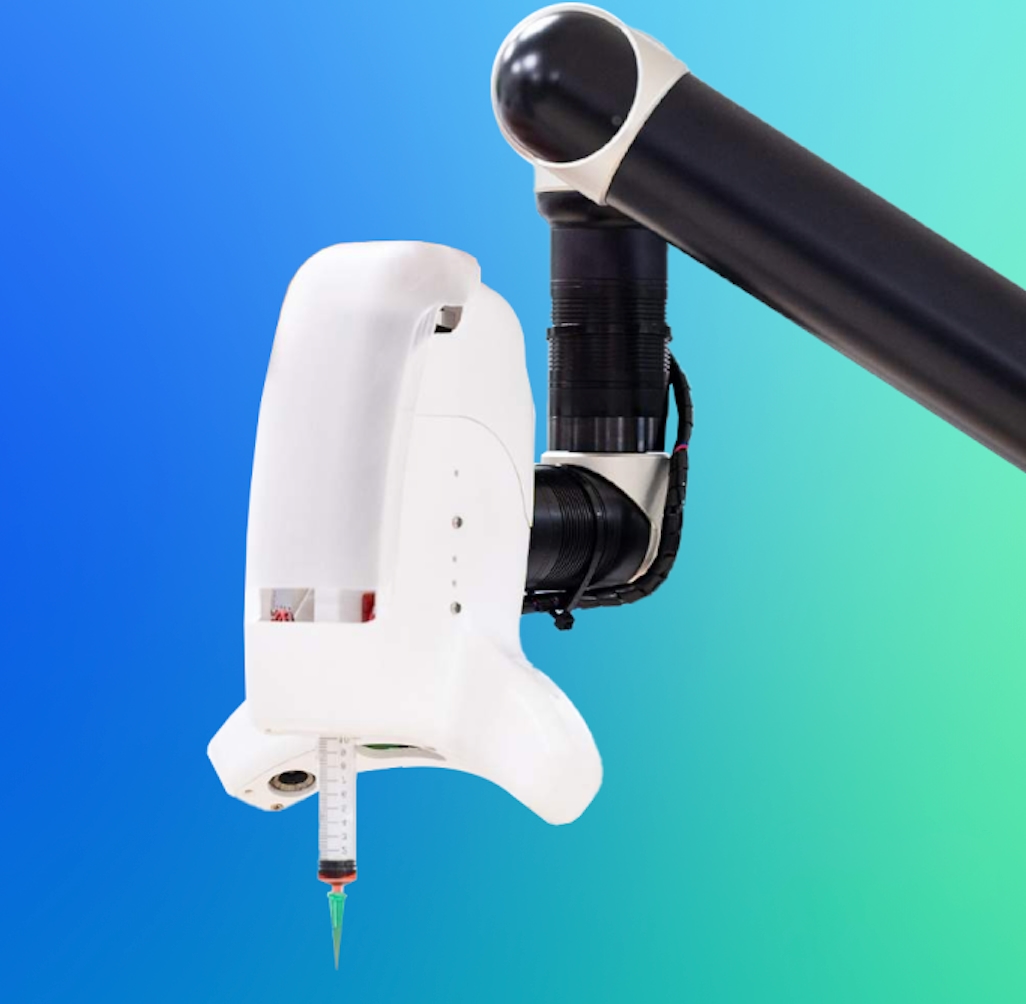Catalog
Search
211 products
View:
- Selected: 1Areas of use
- Selected: 0Item names
- Selected: 0Manufacturer
- Selected: 0Made in
- Selected: 0Additional
View:
211 products
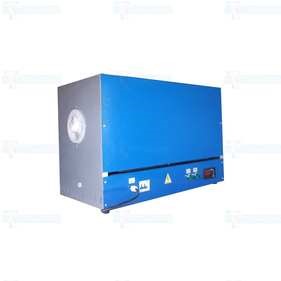
Electric resistance furnace tubular laboratory SUOL-0,9.7/15
Electric resistance furnace tubular laboratory SUOL-0,9.7/15 is designed for heat treatment of various materials and other work at a temperature of 1500oC.
Tula-Term
Tula
Produced in: Tula
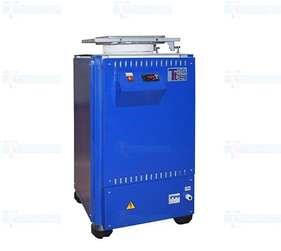
Laboratory shaft furnace SSHOL-8/11
from
197 354 ₽
Designation
SSHOL-8/11
Supply voltage,
220 ± 10%
Network frequency, Hz
50
Power consumption, W, max
4000
Tula-Term
Tula
Produced in: Tula
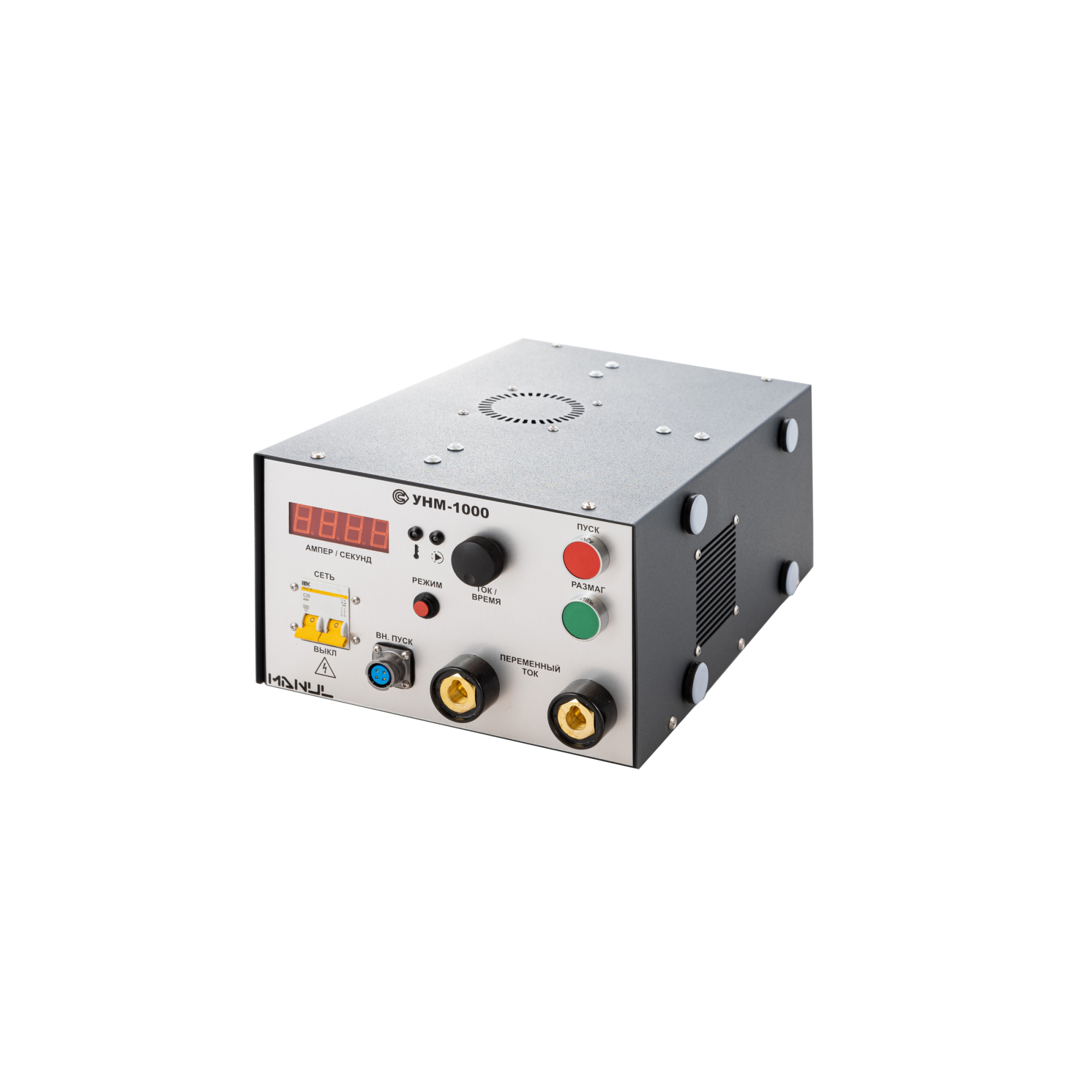
UNM-1000 portable magnetizing device, power unit
from
552 000 ₽
The UNM-1000 allows to detect internal, subsurface and surface defects of different types (cracks, flokens, delaminations, defects of welding seams, etc.) in parts, structural elements, units and mechanisms of industrial units, railway, auto, air vehicles, as well as petrochemical, gas and technological equipment during the manufacturing and repair stages or during routine inspections of the products being in operation.
The principle of operation of the UNM-1000 AC flaw detector
The magnetic powder method of detecting defects in products made of ferromagnetic materials is based on the ability of magnetic powder particles to settle in the defect zone, where inhomogeneities of the magnetic field created by the magnetizing device arise. Unlike devices based on permanent magnets, magnetic particle flaw detectors allow you to set the current and time of magnetization and automatically demagnetize controlled samples.
The UNM-1000 AC flaw detectors allow monitoring of products by the applied field method using various magnetization techniques. To do this, the alternating electric current generated by the flaw detector can be passed through a magnetizing cable or directly through a controlled product connected to the flaw detector using electrical contacts. The value of the current used for magnetization and demagnetization of the product is set by the operator of the device.
Design features and advantages
The UNM-1000 flaw detector is a portable device, which allows you to control the quality of products made of ferromagnetic materials both in production and in laboratory conditions. The basic set of equipment for magnetic particle flaw detection includes a UNM-1000 magnetizing device, a power cable for power supply from a single-phase AC network with a voltage of 220 V, and technical documentation. At the request of the customer, electrical contacts and a magnetizing AC cable can be additionally supplied.
The advantages of the UNM-1000 device of the MANUL series include:
the possibility of monitoring both in the applied magnetic field with longitudinal magnetization using power cables, and with circular magnetization by passing current through the controlled product;
wide range of magnetization current adjustment from 50 to 1000 A;
automatic demagnetization of controlled products;
high performance;
the device is compact and has light weight;
the degree of protection from external influences is at least IP40.
Scope of application of magnetic particle control means
Due to its versatility, simplicity and ease of operation, the UNM-1000 magnetic particle flaw detector can be used in almost all non-destructive testing laboratories of workshops and assembly shops of the automotive and aviation industries, railway transport, for the needs of civil and military shipbuilding. Also, the UNM-1000 magnetic powder control device can be successfully used in the energy sector, in the production of pipelines, metal structures, construction equipment and related industries. Technical characteristics of the portable magnetizing device UNM-1000 fully complies with the requirements of the following standards: GOST R 56512-2015, GOST R 53700-2009 (ISO 9934-3:2002), GOST R 50.05.06-2018, GOST R ISO 10893-5-2016, GOST ISO 17638-2018, RD 34.17.102-88, RD-13-05-2006 , as well as other national and foreign regulations documents on standardization of magnetizing devices and flaw detectors for magnetic powder control.
Technical specifications
• Magnetization current: up to 1000A (RMS), 4.3V,50 Hz
• Demagnetization mode
• Weight: no more than 20kg
• Overall dimensions (W×H×D): 290×160×450 mm
• The device is powered by 220V, 50 Hz
RII MNPO SPEKTR
Moscow
Produced in: Moscow

NMR analyzer "FIANUMLAB"
Designed to study the petrophysical properties of rocks.
Allows you to define:
- Total porosity (Kp);
- Pore size distribution (T2);
- Calculated permeability.
In the presence of a pyrolytic analyzer
, FIANUMLAB calculates for
rock samples:
- Water saturation coefficient (Kv);
- Oil saturation coefficient (Kn).
"FIANUM LAB"
Москва
Produced in: Moscow
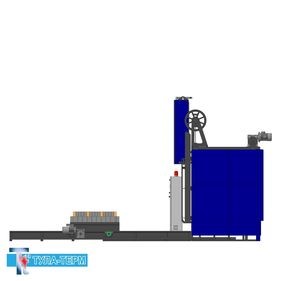
Chamber low-temperature electric furnace with a retractable hearth-12.18.12/5,0- I2-In
Designation
SNOT-12.18.12/5,0- I2-In
Tula-Term
Tula
Produced in: Tula
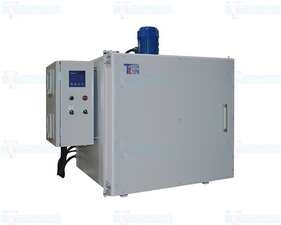
Chamber low-temperature electric furnace of SNO resistance-3,5.5.4/6,5-0,1- I2-V-P
Designation: SNO-3,5.5.4/6,5-0,1- I2-V-P
Temperature: 650
Camera size (SHGV):
350x500x400 Door opening: manual
Regulation zones: 1
Fan: Yes
Tula-Term
Tula
Produced in: Tula
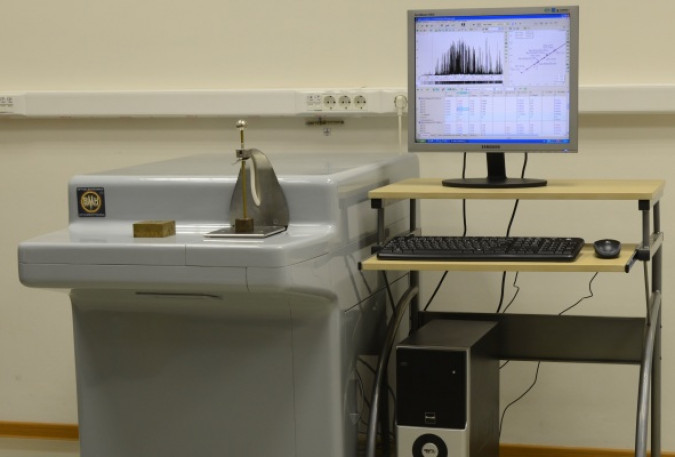
Vacuum Spectrometer Favorite
Vacuum spectrometers are designed for rapid analysis of alloys based on iron, copper, aluminum and other metals in factory and research laboratories, including the determination of elements having analytical lines in the field of vacuum ultraviolet (VUV) (for example, S, P and C in steels).
VMK OPTOELEKTRONIKA
Novosibirsk
Produced in: Novosibirsk
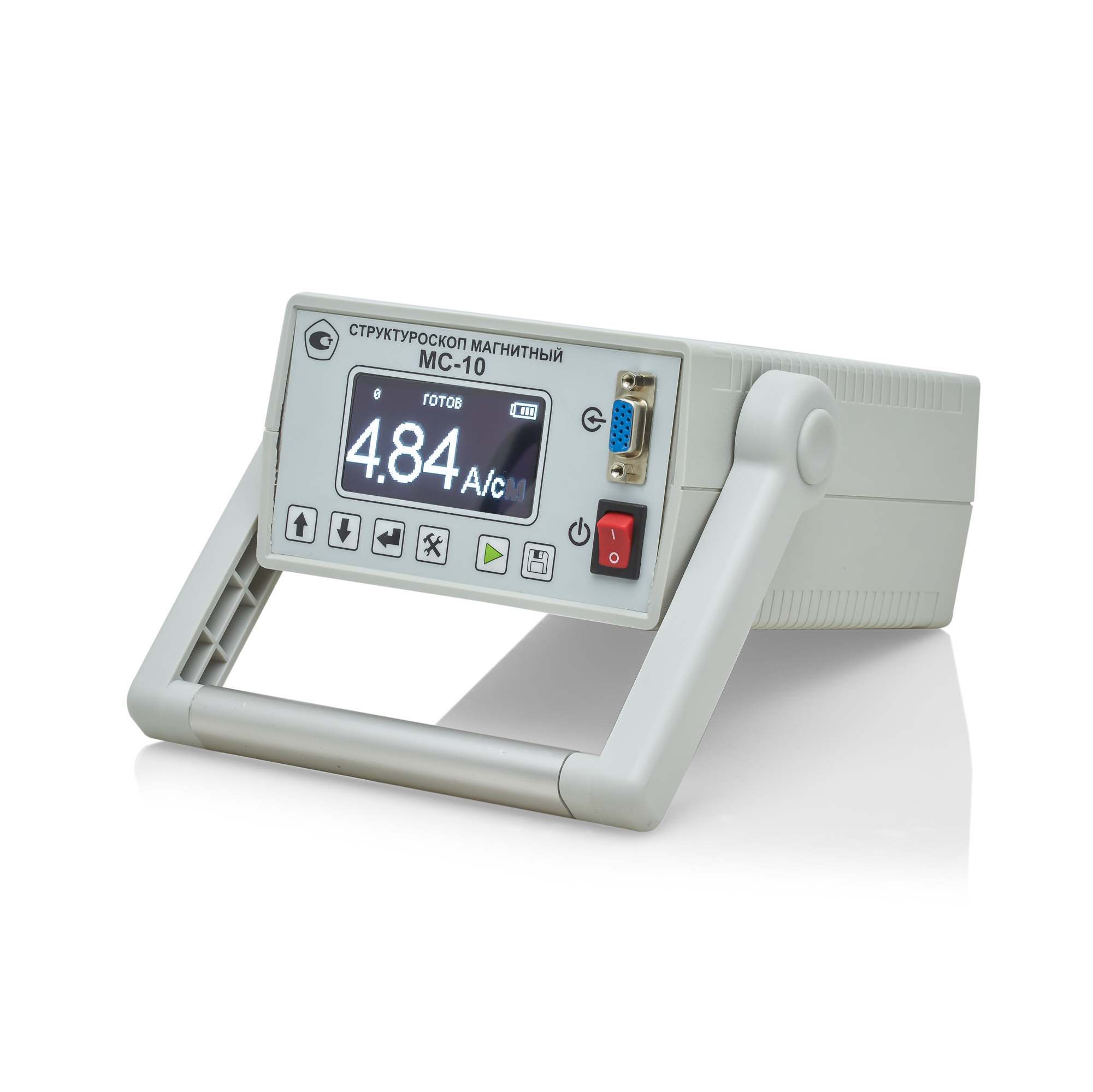
MS-10 Magnetic Structuroscope
from
310 500 ₽
Distinctive features:
- Non-destructive testing of strength, plasticity and viscosity of parts and structures made of ferromagnetic steels and cast iron according to the following standards: GOST 30415-96, OST 14-1-184-65, TU-14-1016-74
- Non-destructive testing of the depth and hardness of surface-hardened layers on steel and cast iron parts;
- Quality control of low-temperature tempering of cutting and measuring tools, bearing steels;
- Control of uniaxial elastic stresses;
- Control of the uniformity of the properties of massive parts.
Technical specifications:
The range of coercive force of the material of the controlled products, A/cm, is 1.0...60.
The limit of the permissible basic absolute error of measurements of the coercive force (Ns) on standard samples at a normal ambient temperature of 20 ± 5°C does not exceed the values of 0.1+0.04 Ns
(Ns stands for the measured value of the coercive force of the standard sample).
This error probability is provided with a gap between the converter and the surface of the controlled product not exceeding 0.5 mm.
Basic version: The structroscope is powered by a battery.
Extended version: It is possible to work on 220V/50Hz grid.
The time of setting the operating mode after power on, min: no more than 2
Time of one measurement, sec: no more than 6
Continuous operation time (without recharging), h: at least 16
Internal memory: up to 512 series of 512 measurements each with the possibility to view the results
Operating temperature range: -20°C to +40°C;
Overall dimensions, (length x width x thickness), mm:
electronic unit: 190x140x80
converter: 135x75x100
Weight, kg:
the electronic unit with a battery: 2.3 ± 0.05
the converter: 1.3± 0.05
Basic version kit:
Ia5.173.023 Electronic unit: 1 pc.
Ia5.125.061 Converter: 1 pc.
Ia8.896.121 Control sample of coercive force (plate PN-1): 1 pc.
Ia8.896.122 Control sample of coercive force (plate PN-2): 1 pc.
Bag-case: 1 pc.
Charger: 1 pc.
Ia2.778.042 RE Operating Manual: 1 copy.
Ia2.778.042 FO Form: 1 copy.
Ia2.778.042 MP Verification instructions: 1 copy.
Extended version:
Additionally, it can be equipped with a Bluetooth® module for communication with a PC and software for receiving and processing data.
It can also be equipped with a small-sized converter.
RII MNPO SPEKTR
Moscow
Produced in: Moscow
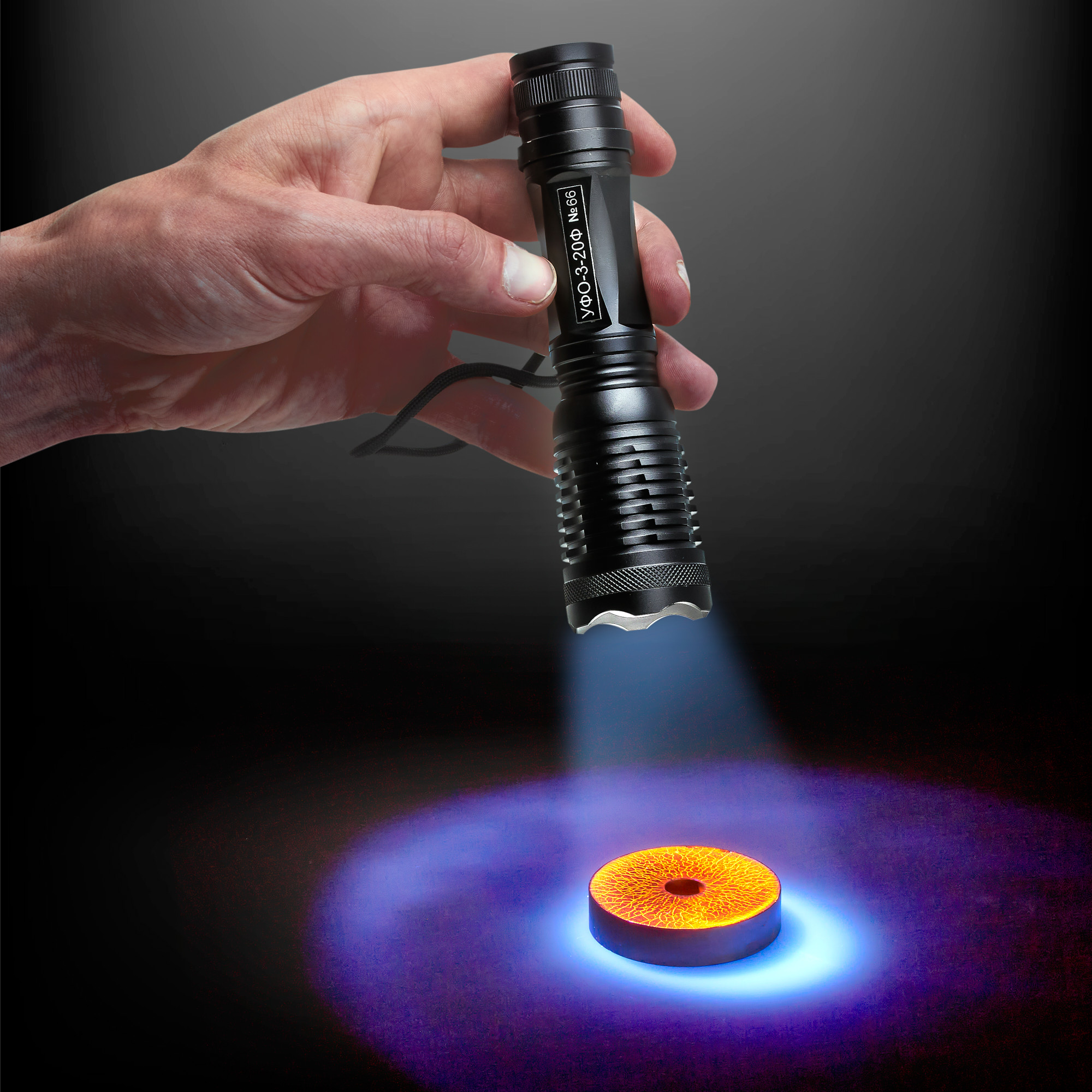
UFO-3-20F UV Irradiator
from
54 000 ₽
The principle of operation of the device
The principle of operation of the irradiator is based on the conversion of DC electrical energy into a normalized flow of ultraviolet radiation in the optical wavelength range of 350 ... 400 nm with a maximum at a wavelength of 365 nm.
Design features and advantages
The irradiator is a lantern consisting of an ultraviolet diode placed behind the focusing system, connected to a DC voltage converter, which supports the optimal mode of starting and functioning of the LED. Structurally, the irradiator is made in a lightweight duralumin housing, in the front of which there is a focusing system with an ultraviolet LED. The housing is equipped with a carrying strap. There is also a power on/off button on the case. As the power source of the irradiator, a lithium-ion battery of type 18650 with a nominal voltage of 3.7 V or 3 AA batteries with a voltage of 1.5V. are used. An ultraviolet LED is used as a source of ultraviolet (UV) radiation.
The use of an LED distinguishes the UFO-3-20F irradiator from similar devices using UV lamps, it provides:
high reliability and durability;
variable diameter of the UV radiation zone;
low current consumption and long continuous operation time;
instant readiness for the first and subsequent turn-on;
low weight, compact;
high radiation intensity;
stability of the characteristics of the irradiator, both during operation and throughout its entire life;
wide operating temperature range.
Scope of application
The UV-3-20F irradiator (lantern) is used for ultraviolet irradiation of the surface of various parts, assemblies and mechanisms during flaw detection by fluorescent methods of non-destructive testing at machine-building enterprises, chemical and petrochemical industries, railway, automobile, water and aviation transport, during the laying and operation of pipelines, in construction, agriculture. The device can be used to check the quality of welds and internal surfaces of closed tanks. The luminescent method makes it possible to ensure high brightness and contrast of the indicator pattern, and, consequently, high sensitivity, especially on parts and products with a dark surface.
Technical specifications
The range of radiated wavelengths, nm 350...400
Ultraviolet irradiation at a distance of 300 mm, W/m2, not less than 20000
with a diameter of the irradiated area of 100 mm not less than 2000
Power supply from a lithium-ion battery type 18650 voltage of 3.7 V,
or 3 AA batteries with a voltage of 1.5V
Continuous operation time without recharging the battery, h, at least 4
Maximum irradiance at the wavelength, 365 nm
Dimensions (diameter x length) 40 x 150
Weight (without batteries), kg, not more than 0.2
RII MNPO SPEKTR
Moscow
Produced in: Moscow
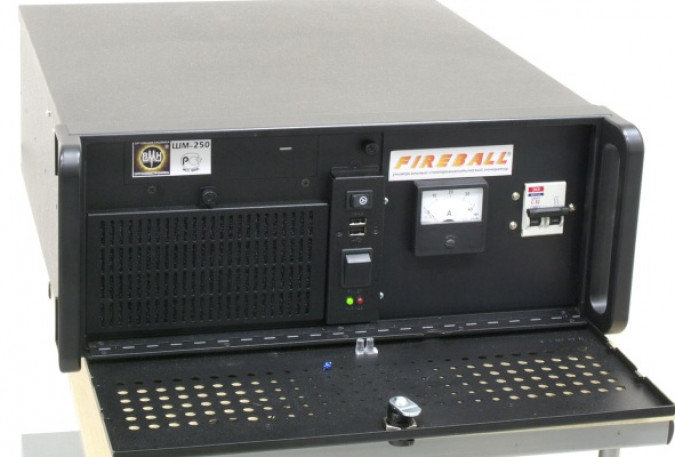
Spectroanalytical generator "Ball lightning"
The generator is designed to produce an electric arc and spark discharge in atomic emission spectral analysis installations. The generator is designed specifically for use in spectral analysis of samples of complex composition for simultaneous determination of impurity and alloying components in a wide range of concentrations.
VMK OPTOELEKTRONIKA
Novosibirsk
Produced in: Novosibirsk

Multichannel analyzer of atomic emission spectra of MAES
The MAES analyzer is a modern means of measuring the intensities of spectral lines and then calculating the concentrations of the elements to be determined.
VMK OPTOELEKTRONIKA
Novosibirsk
Produced in: Novosibirsk

POWDIX 600 X-ray powder diffractometer
A feature of the POWDIX 600 X-ray diffractometer scheme is the vertical Bragg-Brentano optical scheme with a fixed horizontal sample position, which makes working with powdery materials, gels and other viscous substances more practical and convenient.
The high detector resolution and precise positioning of the POWDIX 600 X-ray goniometer achieve an accuracy better than +/- 0.02° (2θ) over the entire angular range.
In the POWDIX 600 diffractometer, the X-ray tube is cooled by an integrated closed water circuit, which can be serviced by any laboratory employee.
A wide variety of sample holders (holder for massive samples, holder with rotation, phoneless cuvettes) expands the functionality of the POWDIX 600 and makes it an invaluable tool for scientific research in solid-state physics, materials science, chemistry, geology and other fields of science
The diffractometer is included in the Russian State Register of Measuring Instruments.
ADVIN Smart Faktory
Minsk
Produced in: Belarus, Minsk
